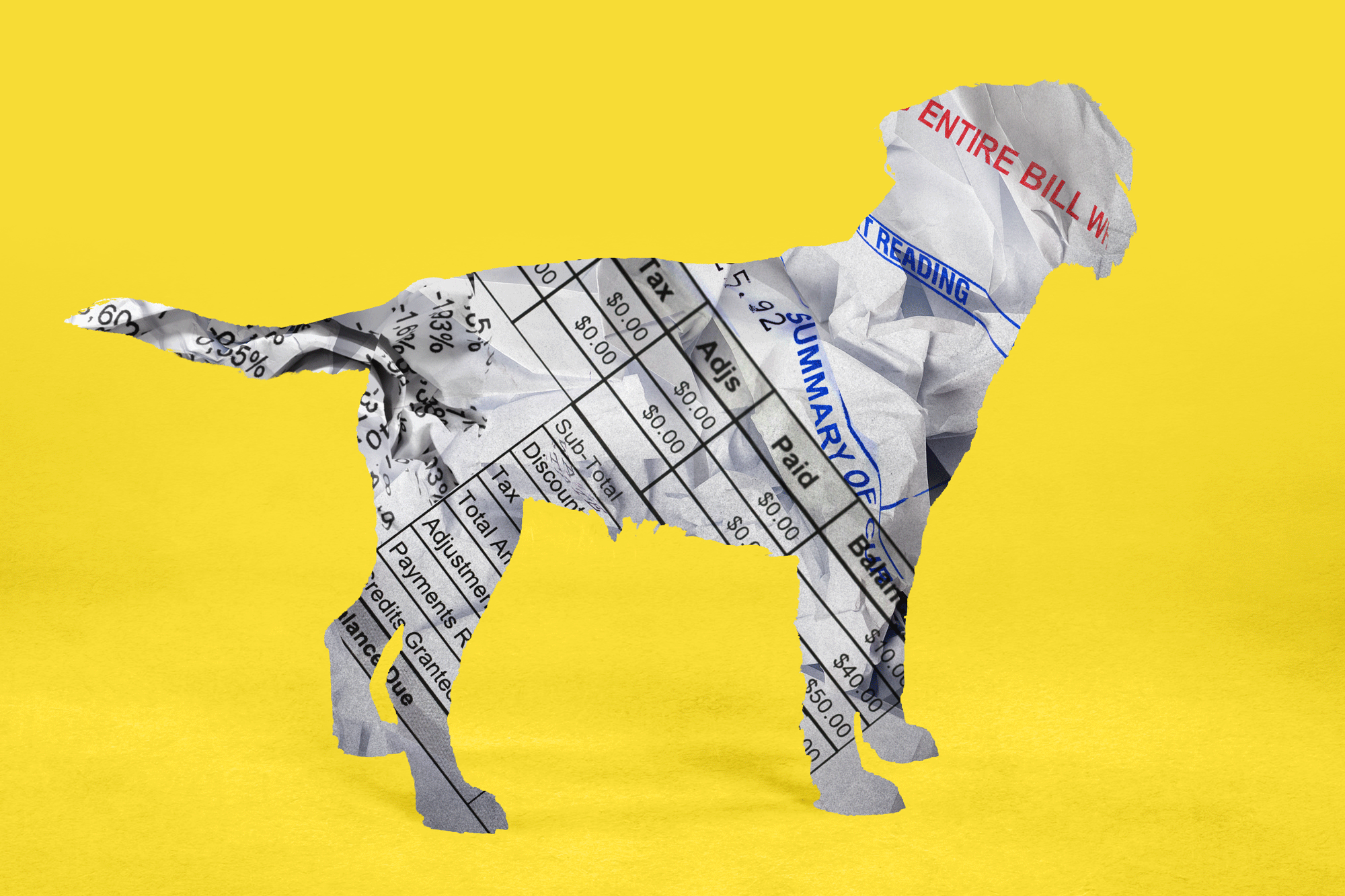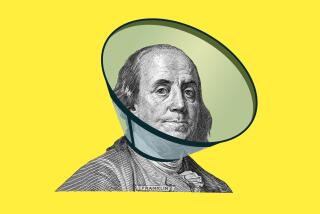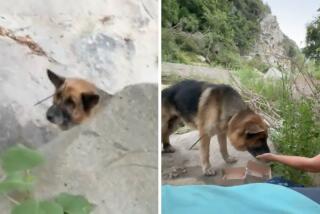When do you stop?
There was a moment late last month when I thought that what was wrong with Clunk might merely be expensive. That was when, after roughly $400 of tests, I agreed to a $600 surgery to remove a tennis ball-sized tumor from his elbow. The bill for this turned out to be $1,600.
There have been many brutal moments since then, the most wretched of which was when it became clear that what was wrong with Clunk was not only expensive but also fatal.
Even before the news came that Clunk’s cancer had metastasized, while I was weighing a $7,000 course of radiation therapy, everyone around me began asking the same question: When should I say no to the next medical bill?
Even if Clunk’s life could be prolonged, when would it be time to put away the credit card and admit that it’s over, that I can’t afford to save him even if he could be saved?
Given that Clunk, a Great Dane-German shepherd cross, has four legs and not two, written into his battle with cancer is the option of euthanasia.
What makes the decision so tricky is that Clunk doesn’t have a vote, and if he did, I dare say it would be to live. Clunk has never bitten anyone (even when attacked). His eyes still shine at the prospect of a pat on the head, and he’s in great shape, except for the rear hind leg riddled with tumors, where a well-meant operation has now left a festering wound.
And dare I say it of a dog? I love him. I love Clunk as much as I’ve ever loved anyone or anything.
Surely experts would have an answer, I thought, so I started dialing.
Loran Hickton, executive director of the North American Pet Health Insurance Assn., offered some perspective. Evidently, vet bills have become more expensive because pets are living longer than ever before.
“Fifty percent of golden retrievers that live over the age of 10 will now experience some form of cancer,” he said. “With the continuous release of human-quality care for the pet market, it means what used to require going to a specialist or university center can now be found in greater metropolitan areas all over the U.S.”
In other words, most owners of the estimated 72 million pet dogs in this country live near places that can charge huge sums to provide ever-more expensive and sophisticated veterinary services. However, according to Hickton, only 2% of these dogs, not including Clunk, are insured.
Dr. Stephen Zawistowski, executive vice president of national programs and science advisor for the American Society for the Prevention of Cruelty to Animals, also favors insurance.
“I have pet insurance on my dog and two cats,” he said. “I do have it, it’s a backup for me. But I don’t think it necessarily completely addresses some of these major bills. Even with insurance it’s going to become incredibly expensive.”
When “a lot” is verging on “too much” for treating a critically sick animal, Zawistowski recommends seeking a second opinion.
“Frankly, if you’re looking at the potential of spending several thousand dollars, spending another couple of hundred for someone else to confirm you need the procedure isn’t such a bad idea,” he said.
A woman who is a certified public accountant and a veterinarian agrees. Karen Felsted, chief executive of the National Commission on Veterinary Economic Issues, advised, “Understand what your options are. Sometimes there can be multiple ways to treat a particular case. The gold standard treatment may be very expensive, but there may be another treatment that is a medically appropriate thing to do. Owners need to understand that option. They should be comfortable saying to their veterinarians, ‘Here’s what I can do.’ ”
I will never know if I would have gone $7,000 into debt for radiation therapy for Clunk. I was spared the decision by a second opinion from the vet who found the metastases. She was blunt that any further treatment for Clunk was inadvisable.
To the mind of the ASPCA’s Zawistowski, what we are experiencing with dogs is an exact parallel of what’s happened with human healthcare.
“We all know people who get their blood pressure medications every other day because they can’t afford it every day,” he said. “The only difference is euthanasia is not an option.”
Because euthanasia is an option with dogs, in all likelihood, I will be the one to kill Clunk, not cancer. For almost a month, the wound from the ill-advised tumor-ectomy has refused to close. As I write Wednesday, he and I are planning to go to the vet tomorrow to see whether a third round of antibiotics and many bandage changes have finally done the trick. If they haven’t, Clunk will be receiving a large dose of pentobarbital and taking a long dirt nap.
I will be standing over him with a shovel having lost the thing I love best in the world.
There are help lines you can dial, I’m told, but not a line that will bring Clunk back, nevermind the thousands spent trying to save him.
Update: On Thursday, Green reported that the bandages came off to reveal a healing wound. Clunk’s cancer remains, but, Green said, “Today was good.”
More to Read
Sign up for Essential California
The most important California stories and recommendations in your inbox every morning.
You may occasionally receive promotional content from the Los Angeles Times.










